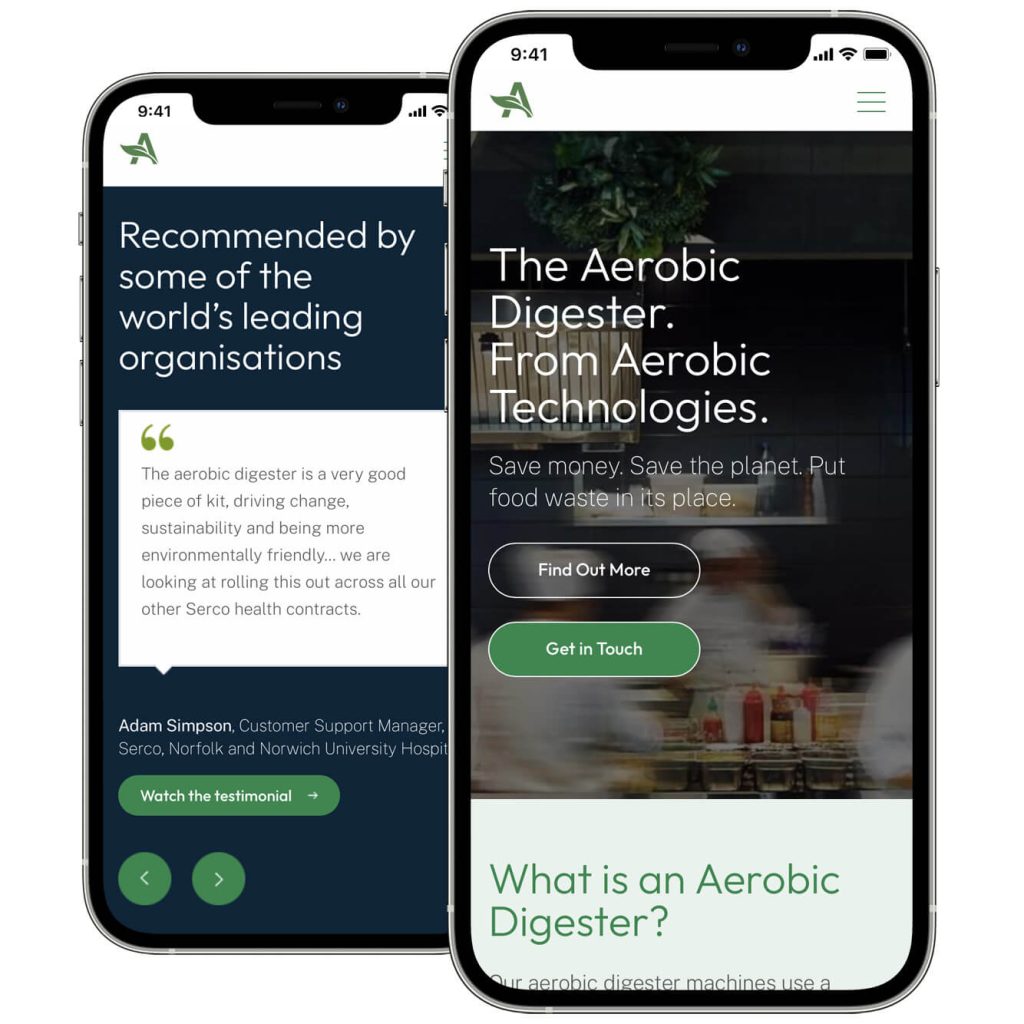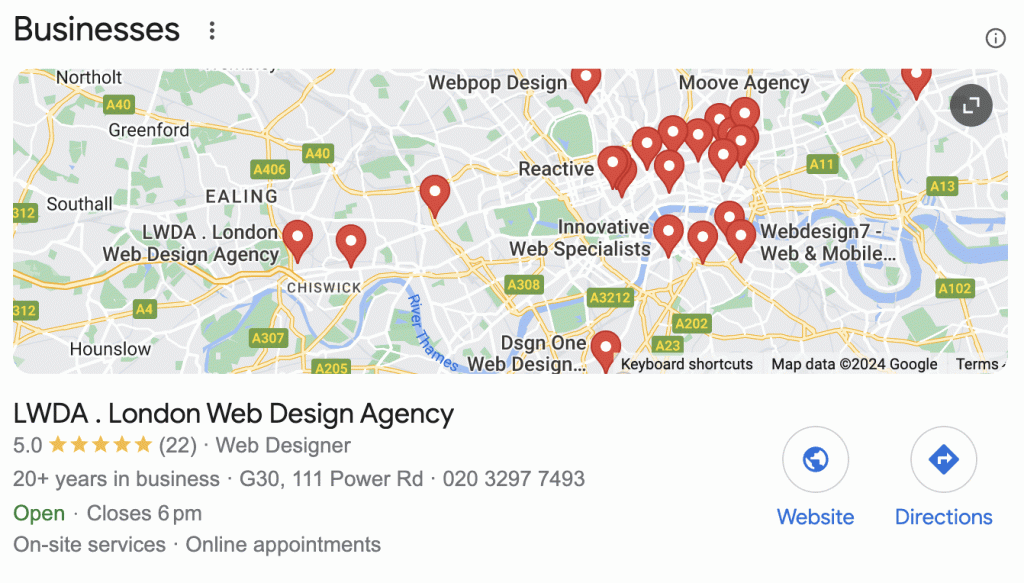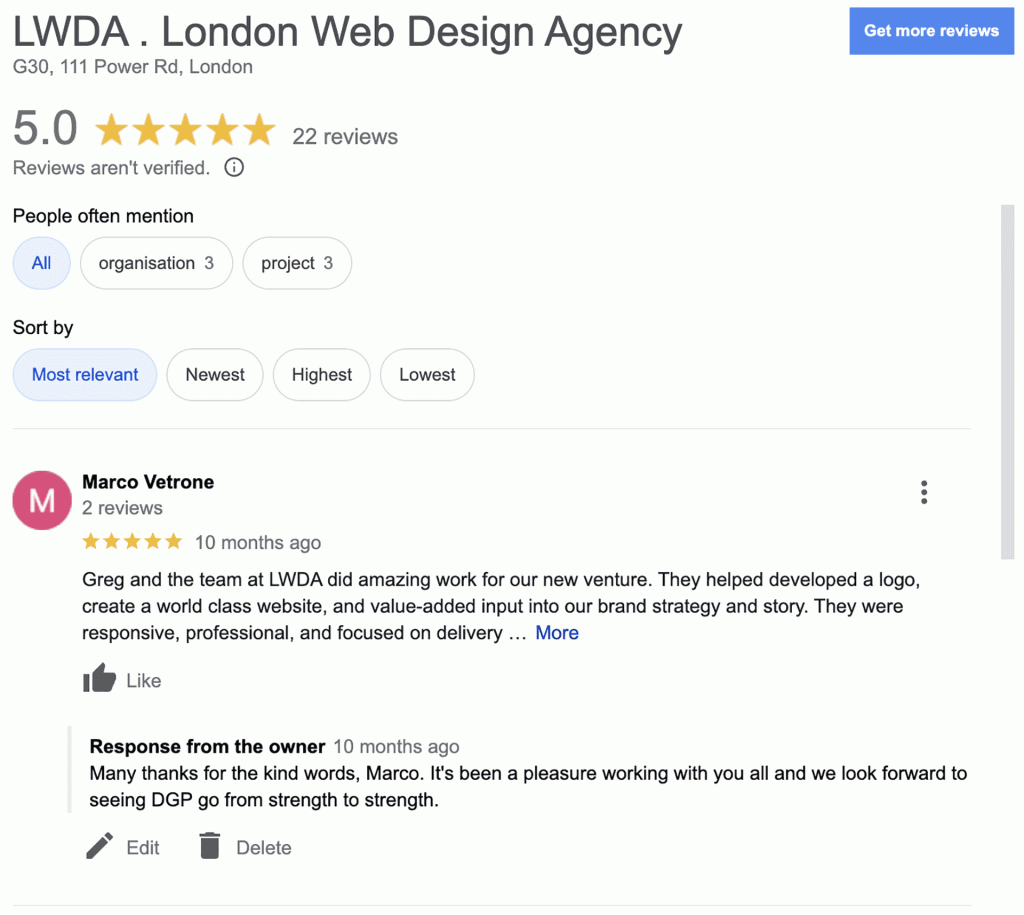In today’s digital age, a well-designed website is essential for any small business’s success. But what features should you prioritise to ensure your website not only looks great but also drives traffic and conversions? This comprehensive guide explores the must-have features for a small business website, providing expert insights and practical tips to help you build a strong online presence.
Let’s get started…

A responsive design ensures that your website looks and functions seamlessly across all devices, from desktops to smartphones. With more people accessing the internet on mobile devices than ever before, having a mobile-friendly website is crucial for engaging users and improving your site’s search engine ranking.

Mobile optimisation is not just about resizing content — it’s about creating a user experience tailored to smaller screens. Studies show that 57% of users won’t recommend a business with a poorly designed mobile site, emphasising the importance of mobile optimisation for small businesses.
Effective navigation is key to helping visitors find what they’re looking for quickly and easily. A well-organized navigation menu improves user experience and encourages visitors to explore your site further.
Keep your menu structure simple and intuitive, with clear categories and subcategories. Avoid overwhelming visitors with too many options, and use descriptive labels to guide them to the information they need.
Top Tip: When it comes to choosing which sections and pages to feature in your navigation, remember Miller’s Law. The average person can only keep seven (plus or minus two) items in their working memory. So, if your main navigation extends beyond nine links, things are likely to get a bit crowded and overwhelming, so consider demoting a few links to the footer.
Incorporating a search bar allows users to find specific content without having to navigate through multiple pages. This feature is especially useful for sites with a large amount of content or products.
Eye-catching visuals are essential for capturing visitors’ attention and conveying your brand’s personality. High-quality images, videos, and graphics can make your website more engaging and memorable.
Invest in professional photography to showcase your products, services, and team members in the best possible light. Authentic and high-resolution images build credibility and trust with your audience.
If your budget is limited, consider the use of royalty-free images, but again, be wary of quality and choose only those that work well for your brand.
Incorporate videos and infographics to communicate complex information in a visually appealing format. These multimedia elements can help increase engagement and retention rates.
A compelling call-to-action prompts visitors to take the desired action, whether it’s making a purchase, signing up for a newsletter, or contacting your business. Effective CTAs guide users through the conversion process and drive measurable results.
Place CTAs strategically throughout your website, using contrasting colours and persuasive language to grab users’ attention. Experiment with different placements and designs to optimise conversion rates.
For e-commerce businesses, offering secure payment options is essential for building trust and ensuring customer confidence. Implementing SSL encryption and partnering with trusted payment gateways can protect sensitive customer information and prevent data breaches.
An SSL certificate encrypts data transmitted between your website and users’ browsers, safeguarding against cyber threats and providing a secure browsing experience. Displaying a trust seal on your site can reassure visitors that their information is safe.
Optimising your website for search engines is crucial for increasing visibility and driving organic traffic. By implementing SEO best practices, you can improve your site’s ranking in search engine results pages (SERPs) and attract more potential customers.
Research relevant keywords related to your business and incorporate them naturally into your website’s content, meta tags, and URLs. Focus on long-tail keywords with lower competition to target specific audiences.

For small businesses targeting local customers, optimising for local search is essential. Claim your Google My Business listing, optimise your NAP (name, address, phone number) information, and encourage positive reviews from satisfied customers.
Integrating social media into your website allows visitors to easily connect with your brand across multiple platforms. By fostering engagement and sharing, you can expand your reach and attract new customers through social channels.
Include social sharing buttons on your website’s content to encourage visitors to share it with their networks. This can help increase your content’s visibility and drive traffic back to your site.
Displaying live social media feeds on your website provides real-time updates and showcases your brand’s activity and engagement. It adds dynamic content to your site and encourages visitors to follow your social profiles.
Maintaining a blog allows you to regularly publish fresh, relevant content that educates, entertains, and engages your audience. Blogging not only enhances your website’s SEO but also positions your business as an industry authority.
Develop a content strategy that addresses your target audience’s pain points and interests. Consistently publish high-quality blog posts that provide value and encourage interaction through comments and social shares.
Use internal linking to connect blog posts to relevant product pages or other content on your website. This not only improves navigation but also helps search engines crawl and index your site more effectively.
Displaying customer testimonials and reviews on your website can help build credibility and trust with potential customers. Positive feedback from satisfied customers serves as social proof of your business’s quality and reliability.

Share real-life success stories and case studies that demonstrate how your products or services have helped customers overcome challenges or achieve their goals. Personal anecdotes resonate with prospects and reinforce your brand’s value proposition.
Actively encourage customers to leave feedback and reviews on your website or third-party review platforms. Respond promptly to both positive and negative reviews to show that you value customer feedback and are committed to continuous improvement.
Make it easy for visitors to get in touch with your business by providing clear contact information and support options. Accessibility and responsiveness are key to providing excellent customer service and fostering trust with potential clients.
Include a user-friendly contact form on your website, allowing visitors to submit inquiries or requests directly. Customise the form fields to gather relevant information and respond promptly to incoming messages.
Consider implementing a live chat feature to offer immediate assistance and address customer questions or concerns in real-time. Live chat enhances the user experience and can lead to higher conversion rates by providing instant support.
Building a successful small business website requires careful planning and attention to detail. By incorporating the essential features outlined in this guide, you can create a powerful online presence that attracts visitors, engages customers, and drives business growth.
Answering common questions on your website can save time for both you and your customers while providing valuable information. Here are some FAQs about small business websites: